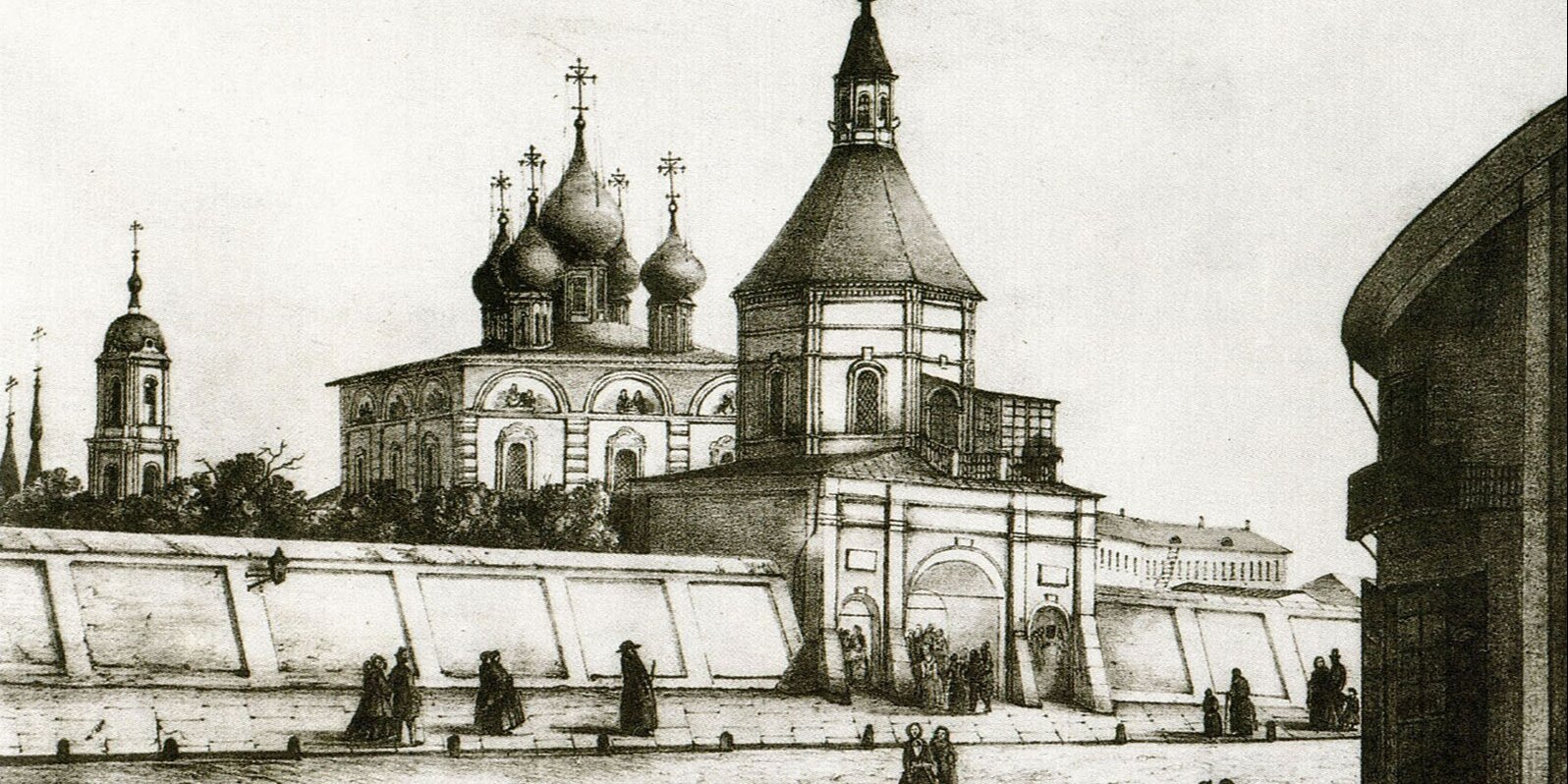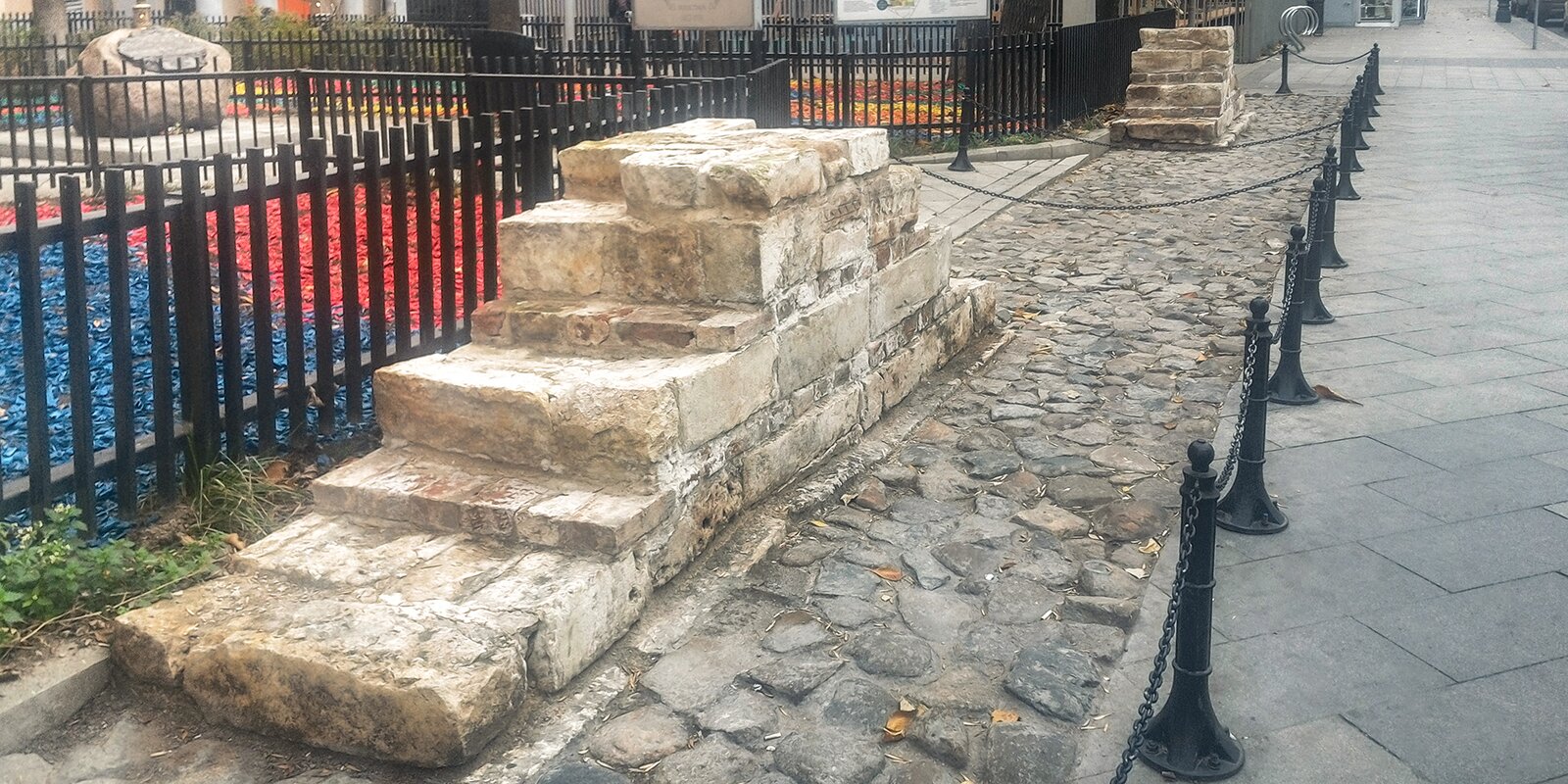Over the past five years, many interesting historical objects have been discovered in Moscow during the improvement according to My Street program – a total of about 13 thousand individual finds, according to Moscow City.
The most significant excavations were carried out in the Bolshoy and Maly Zlatoustinsky Lanes, as well as on Ilyinka Street. Because of the archaeological work, we had to adjust and sometimes completely change the plans for construction and improvement. Read about the most important findings in the article on mos.ru.
Fragments of the Zlatoust monastery fence
In 2018, during the work on the improvement of streets in Bolshoy and Maly Zlatoustinsky Lanes, the remains of architectural structures were discovered. Initially, white-stone brickwork was found in Bolshoy Zlatoustinsky Lane. It was located at an angle to the existing garden square and partially went under it.

“The analysis of historical plans and other archival documents allowed us to determine that the fragment found is part of the fence of the Zlatoust monastery, built in the early 18th century. The task was undertaken by archaeologists, who managed to find a section of the monastery wall about 18 meters long. And when clearing the monastery fence remains and the trenches next to it, items of different eras were found: the front valet of the icon –reliquary (15th–16th centuries), copper and silver coins (15th–17th centuries), a copper cross (17th–18th centuries), a fragment of a bracelet with the image of a mythological animal (17th century), weight-type buttons (17th–18th centuries) and many other things,” Vladimir Berkovich, Deputy General Director of the excavation company, said.
Upon completing the work, on the monastery wall place, it was decided to install a three-dimensional signo – a fragment of the object found underground, which cannot be completely removed. Thus, part of the monastery brickwork made of white stone can be seen today in Bolshoy Zlatoustinsky Lane.
According to archival documents, the first mention of the Zlatoust Monastery in Moscow was in 1412. Its main stone church, the Cathedral of St. John Chrysostom, was built in 1479. By the beginning of the 20th century, beside the main cathedral, there were three other churches in the monastery. The bell tower was erected in 1714, the stone fence with turrets – in 1711. After the October Revolution, the Zlatoust Monastery was abolished. By 1937, all of its church buildings had been destroyed.
Brickwork of the St Nicholas the Wonderworker Church in Pillars
In Maly Zlatoustinsky Lane, fragments of white-stone brickwork of the northern gallery of the St. Nicholas the Wonderworker in Pillars were found.

“Thanks to the excavations, a part of the church wall with a length of 30 meters was found, next to which a fragment of a cobblestone pavement of the XIX century was well preserved.” Vladimir Berkovich noted.
During the site survey, there were also found crosses and hand-minted copper coins (late 15th–18th centuries), a fragment of ceramic tiles (mid-17th century), a cast copper figure of a cherub. As a result, the plans for the improvement of the lane were changed – a museum window (a special showcase) was erected over the most preserved fragment of the church wall. And now it is exhibited and available for viewing. The visible section of the wall was reinforced and treated with a special solution.
The works carried out in 2018 on the museumification of the architectural remains of the Zlatoust Monastery and the Church of St. Nicholas the Wonderworker in Pillars were awarded with a diploma of the Moscow Government ‘Moscow Restoration’ contest.
The first mention of St. Nicholas the Wonderworker in Pillars Church dates back to 1547, in 1629 it became made of stone. In 1669, by the Tsar Alexei Mikhailovich decree, a new church was erected under the guidance of the architect Ivan Kosmin (Grasshopper). This was the first Moscow church with a ceramic decor. In the 1930s, the building was demolished. The two carved architraves and the portal of the church that have survived to this day are embedded in the northern wall of the Donskoy Monastery fence.
The foundation and crypt of the Church of St. Nicholas the Grand Cross
Another object, the discovery of which made to adjust the design solutions of the improvement is the Church of St. Nicholas the Grand Cross in the area of house 21 on Ilyinka Street.
During the church residuals excavation, in the chapel foundation, the reused sepulchral plate of the XVII century was also found. And to the east of the church central apse, a brick crypt was found. According to scientists, it can date back to the 19th century, as evidenced by the parameters of the brick. The crypt was cleared, but unsealing was not performed.
In order to preserve the object, it was decided to shift the planned lay of utilities to another place. In the course of archaeological study, a fragment of the icon copper frame and an element of the church dome roof were also found in this place. As a result, the structures and artifacts found, made the designers to change their plans for the complex improvement of Ilyinka Street.
According to historical sources, the first church (probably wooden) is mentioned in the first quarter of the 16th century. The new building was erected in 1680–1688, and it immediately became one of the best examples of Moscow architecture of the late 17th century. The church was built of brick on a white stone foundation at the expense of the Arkhangelsk merchants Filatievs.
The main altar of the church was consecrated in the name of the Dormition of the Most Holy Theotokos, the chapel – in the name of Nicholas the Wonderworker. The people called the church St. Nicholas the Grand Cross church due to the name of the chapel and because of the two-meter wooden cross erected in the church by the merchants Filatievs votive. But in 1933, the church was demolished due to the fact that part of the church went far on the sidewalk and interfered with traffic.




